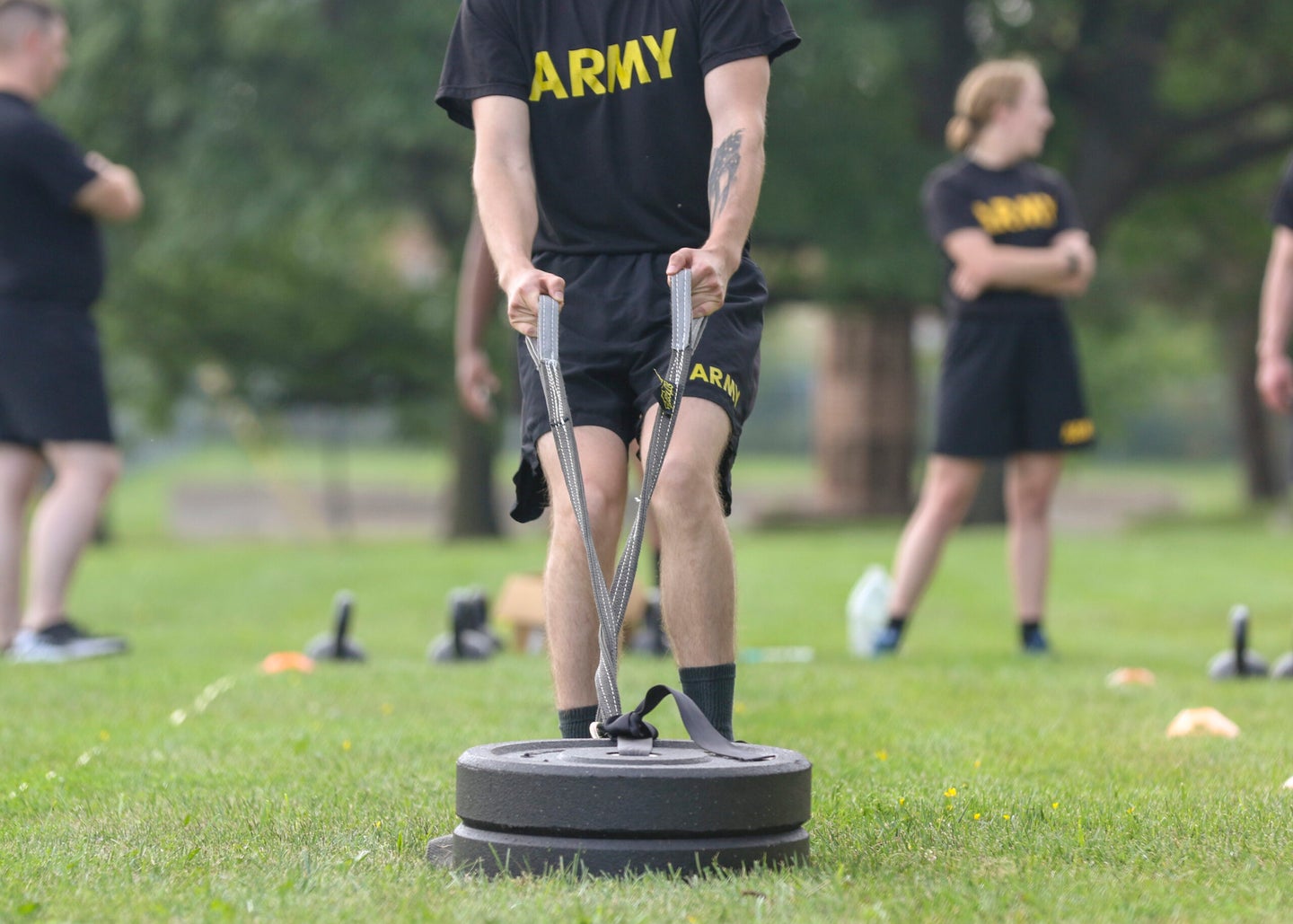Army must “increase” fitness standards, but can use gender-specific scores
The Army said it's going to meet the new requirement with "analytically driven standards." Congress did not require that scores be gender-neutral.

Congress has tasked the Army with implementing “increased” fitness standards for soldiers most likely to see combat, but it’s unclear whether different fitness standards will soon apply to men and women.
A measure in the 2024 National Defense Authorization Act, which sets policy and directs funding for the Pentagon, calls for the Army Secretary to implement “increased minimum fitness standards” as part of the Army Combat Fitness Test.
The new rules come as the latest in years of debate and changes to the ACFT, first introduced in 2017.
The House and Senate passed an agreed upon version of the NDAA which is now headed to President Joe Biden’s desk to be signed into law.
Over the next 18 months, the Army will be required to increase ACFT standards for soldiers in certain combat arms military occupational specialties like infantry, Special Forces and artillery. The service said it plans to use data to figure out what that looks like.
In an email to Task & Purpose, Army spokesperson Heather Hagan said “the Army will immediately begin work to determine how to meet this requirement with analytically driven standards. We will continue to work with Congress throughout this process, and the ACFT will remain the Army’s fitness test of record for all soldiers.”
Changing standards for gender
Upending the way the Army measures the fitness of its soldiers has proven to be a long road.
After decades of measuring soldiers by mid-20th century fitness benchmarks like distance runs and a few calisthenics, the Army introduced the ACFT in 2017, which held male and female soldiers to the same physical fitness standards, regardless of age. The Army made adjustments to gender scores in 2019 after initial reviews showed that 84% of women who took the ACFT had failed it.
A second change came in March 2022 when the Army again pointed to data and decided to drop the leg tuck event after a RAND Corporation study found that the exercise was not a good test of core strength.
At a Congressional hearing in May 2022, Secretary of Army Christine Wormuth said the goal of the ACFT was to raise the overall fitness levels of soldiers and that the Army didn’t want to “disadvantage any sub-groups,” based on evidence collected in multiple studies.
But others don’t feel the same way. Rep. Mike Waltz’s (R-Fla.), former Green Beret, called for the NDAA to specifically mandate gender-neutral standards for combat soldier specialties, which the final version does not include.
Subscribe to Task & Purpose Today. Get the latest military news and culture in your inbox daily.
Waltz wanted the legislation to reflect that “fitness standards should be based on the job and whether you can do it or not regardless of what gender you are,” an official from his office said.
Waltz, the official said, wanted to make sure “fitness standards aren’t compromised for reasons unrelated to warfighting,” the official said. Waltz was also “disappointed” that the legislation allows for an 18-month deadline rather than immediate reforms. “This is a problem that needed to be addressed urgently.”
A combat-ready test
The ACFT six-event test is meant to gauge how prepared soldiers are to perform tasks in combat and includes a two-mile run, 250-meter sprint/drag/carry, maximum weight deadlift, plank, standing power throw and hand-release pushup.
The ACFT even faced being put on indefinite hold. The Senate version of the NDAA would’ve ordered the Army to revert to the three-event Army Physical Fitness Test, while continuing to make changes to the ACFT.
In testimony in May 2022, Wormuth defended the ACFT’s exercises and standards against the now-retired traditional PFT.
“The new Army Combat Fitness Test is much more challenging than the Army Physical Fitness Test,” Wormuth testified.
In response, Sen. Tom Cotton (R-Arkansas) called the new standards “pathetic” and said that the test was “going to get people killed.” He advocated for MOS-specific tests for “men and women alike to meet the same standards.”
The NDAA measure requiring tougher standards applied to military occupational specialties within the combat arms field, including MOSs in Infantry (11A, 11B, 11C, 11Z); Combat engineers (12A, 12B); Artillery (13A, 13F); Special Forces (18A,18B, 18C, 18D, 18E, 18F, 18Z); and Armor (19A, 19C, 19D, 19K, 19Z).
The latest on Task & Purpose
- First female active-duty soldier graduates from sniper school
- 5 question only a veteran would ask Medal of Honor recipient Michael Thornton
- Navy fires recruiting district commanding officer
- Army tanker vet facing cancer gets a final wish: send one last round
- Army employee indicted for stealing $100 million from military youth program
